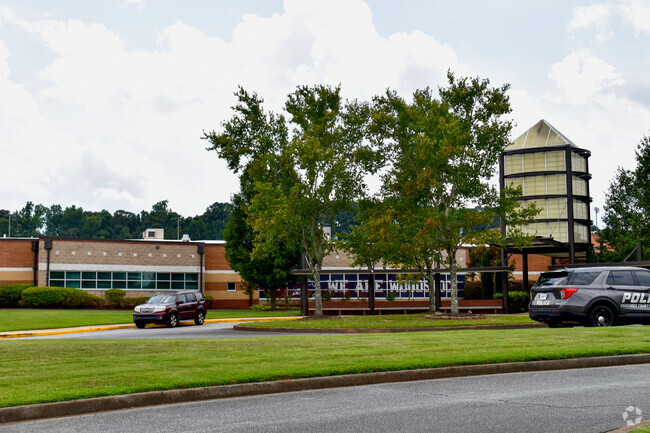Woodstock High School in Cherokee County, Georgia, experienced a brief but intense lockdown on Wednesday, November 20, 2024, after an alarm system falsely indicated an active shooter threat on campus. Emergency responders, including police, EMS, fire trucks, and ambulances, arrived en masse as part of the immediate response to the Code Red alert.
Authorities confirmed that the incident was a false alarm. According to the Cherokee County School District, the lockdown was initiated after the Code Red alarm was mistakenly activated due to user error. This alarm system, designed for critical emergencies such as medical crises and active shooter scenarios, inadvertently caused panic among students, staff, and the broader community.
Reports indicated that students and staff adhered to lockdown protocols while law enforcement thoroughly swept the school to ensure no real threat was present. After verifying the absence of danger, the lockdown was lifted, and school activities resumed, although the dismissal process was delayed.
Such incidents, commonly referred to as “swatting,” have become increasingly prevalent in schools across the U.S., often resulting in significant emotional and logistical disruption. In recent months, other school districts nationwide have reported similar false alarms, prompting widespread law enforcement responses and raising concerns over resource misuse and public safety risks. The FBI has investigated such hoaxes in the past, underscoring the danger these false alarms pose to communities.
This incident serves as a stark reminder of the importance of rigorous training and oversight in using emergency alert systems to prevent accidental activations. The school district extended apologies to parents and students for the undue stress caused and assured the public of its commitment to refining safety protocols to avoid similar occurrences in the future.
The Cherokee County Sheriff’s Office has not released further details regarding the incident, and investigations are ongoing to rule out any potential foul play. No injuries or damage were reported, and the situation concluded without escalation. However, community members expressed concern over the psychological impact on students and the need for better preventative measures.
False alarms such as these divert critical resources from actual emergencies, placing undue strain on emergency services and risking desensitization to real threats. Educational institutions are urged to review and reinforce their safety mechanisms to mitigate such disruptions while maintaining robust emergency preparedness.
This episode highlights a broader conversation about safety in schools, emphasizing the balance between swift response to potential threats and the need to prevent unnecessary alarm. The Cherokee County community is expected to engage in discussions with school authorities to enhance system checks and foster confidence in the region’s emergency response infrastructure.
